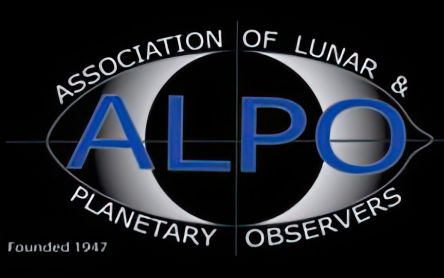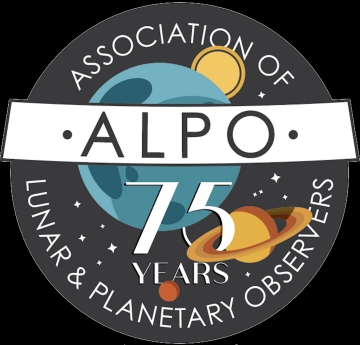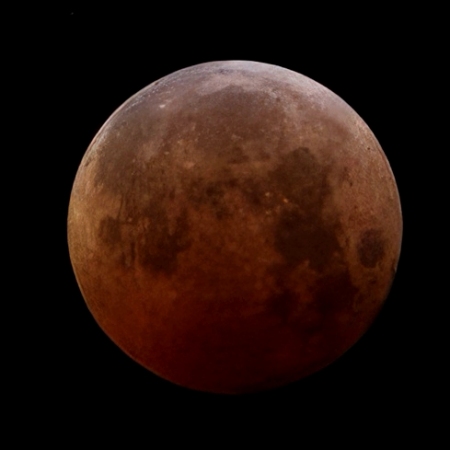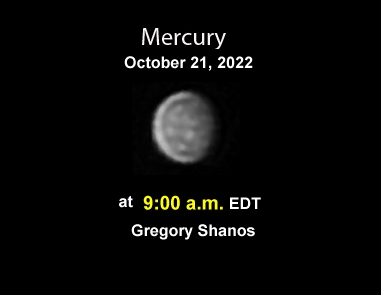
Announcements
The ALPO Journal
The ALPO collects and analyzes observations of various Solar System bodies and associated phenomena and publishes detailed reports concerning these bodies in its quarterly publication the Journal ALPO, otherwise known as The Strolling Astronomer. Membership in the ALPO includes receiving our journal, and back issues can be found in our Publications section.
We welcome and provide services for all individuals interested in lunar and planetary astronomy. For the novice observer, the ALPO is a place to learn and to enhance observational techniques. For the advanced amateur astronomer, it is a place where one's work will count. For the professional astronomer, it is a resource where group studies or systematic observing patrols add to the advancement of astronomy.
There are a range of membership levels available starting with annual dues of only $22. See the footer below for links on how you can become a member today.
ALPO Awards
Since 1985 the ALPO has been recognizing the achievements of our fellow amateur and professional astronomers through our awards program. The three awards offered and their most recent recipients are noted below. Follow the links to learn more about the awards and past recipients.
Walter H. Haas Observer’s Award
2024 Winner: Robert Lunsford
The Walter H. Haas Observer’s Award is bestowed annually (generally when the ALPO meets in the summer), to an amateur astronomer for excellence in observational Solar System astronomy.
Visit the Walter H. Haas Observer’s Award page for more background on the award and a full list of recipientsPeggy Haas Service Award
2024 Winner: Robert H. Hays
The Peggy Haas Service Award was established in 1997 to recognize members of the ALPO for outstanding service to our organization.
Visit the Peggy Haas Observer’s Award page for more background on the award and a full list of recipientsMichael Reynolds Astronomy Award
2022 Winner: Scott Roberts
This award is presented to an individual for a significant contribution to popularizing astronomy, recognizing their outstanding contributions to the public understanding and appreciation of astronomy.
Visit the Michael Reynolds Observer’s Award page for more background on the award and a full list of recipients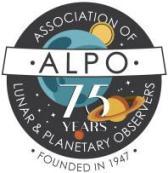
The Association of Lunar and Planetary Observers (ALPO) is an international organization devoted to study of the Sun, Moon, planets, asteroids, meteors, and comets. Celebrating our 75th anniversary in 2022, our goals are to stimulate, coordinate, and promote the study of these bodies using methods and resources available to both amateur and professional astronomers.
The science of astronomy has never been more exciting or dynamic than it is today - for the novice observer, the ALPO is a place to learn and enhance one’s observational techniques. For the advanced amateur astronomer, it is a place where one's work will matter. And for the professional astronomer, it is a resource where group studies or systematic observing patrols add to the advancement of astronomy.
ALPO members range from enthusiastic individuals with the desire to pursue an initial interest in astronomy to advanced amateurs to professional astronomers deeply involved in lunar and planetary astronomy.
Becoming a member is easy, and we welcome you to join us as we explore and learn more about this vast universe we all call home. Simply select one of the options below to get started.
Please use this link to purchase your membership online via PayPal.
Download and complete the ALPO Membership form following the instruction on the form
